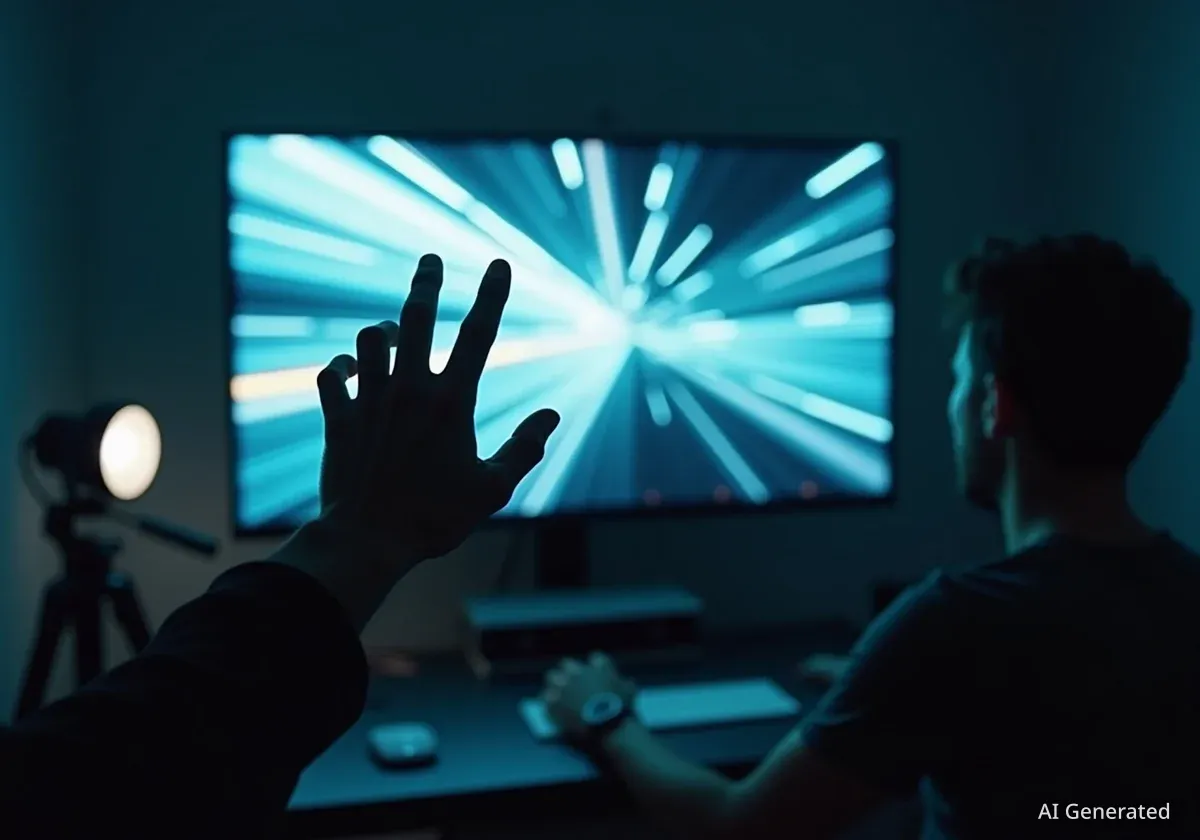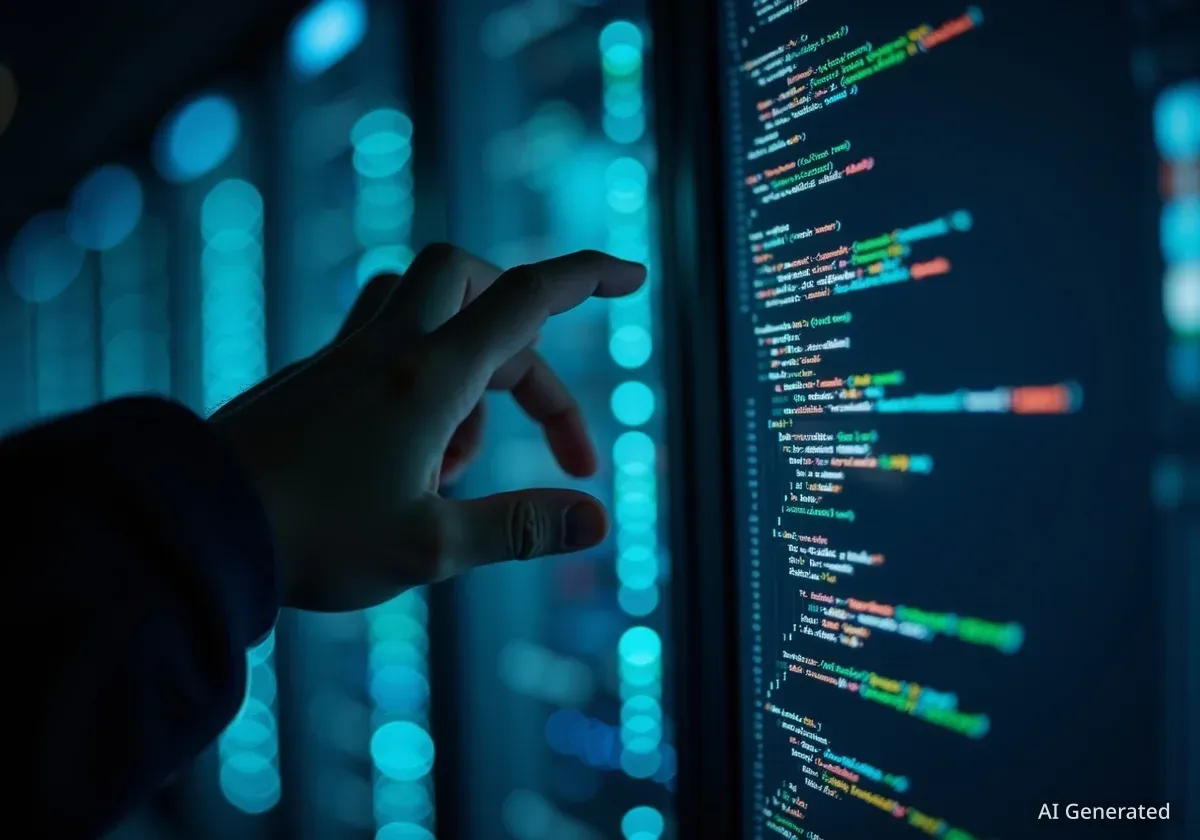A significant divide is emerging between Silicon Valley's technology firms and Hollywood's entertainment industry over the rapid advancement of artificial intelligence in video creation. Recent events have highlighted conflicting views on tools like OpenAI's Sora, with tech leaders promoting them as creative aids while studio executives express deep concerns about copyright infringement and industry disruption.
The debate intensified following OpenAI's DevDay, where its video generation model was presented as a tool for creators, and a subsequent Bloomberg Screentime event in Los Angeles, where entertainment leaders voiced anxiety about the technology's unchecked growth and its use of their intellectual property.
Key Takeaways
- OpenAI CEO Sam Altman has positioned AI video tools like Sora as beneficial for creators, comparing them to a new form of fanfiction.
- Hollywood executives are primarily concerned with the unauthorized use of copyrighted material for training AI models.
- The video generation app Sora quickly reached 1 million downloads, indicating rapid public adoption and increasing pressure on the entertainment industry.
- There is a fundamental culture clash between the fast-paced innovation of the tech sector and the established, rights-focused structure of Hollywood.
OpenAI Presents AI as a Creative Partner
At its recent DevDay event, OpenAI positioned its new video generation application, Sora, as a revolutionary tool for content creators. Company CEO Sam Altman framed the technology as an asset designed to empower artists and storytellers. During a media question-and-answer session, Altman suggested the tool would foster deeper connections between creators and audiences.
"On the whole, creators, rights holders, people are very excited about the potential of this," Altman stated. "They believe it will deepen connection. It’s kind of like a new generation of fanfiction."
This perspective frames generative AI not as a replacement for human creativity but as an enhancement. The company's public stance is that it is being cautious with the technology's rollout, even suggesting it has been restrictive in the types of video content users can generate. The rapid success of the Sora app, which reportedly surpassed 1 million downloads on the App Store shortly after its release, demonstrates significant public interest in these new capabilities.
What is Generative Video AI?
Generative video AI models, such as OpenAI's Sora, create video clips from text descriptions. They are trained on massive datasets of existing videos and images, learning patterns, styles, and movements to generate new, original content. The source and legality of this training data are central to the current debate.
Hollywood's Growing Apprehension
In stark contrast to the optimism from Silicon Valley, leaders in the entertainment industry have expressed significant alarm. At the Bloomberg Screentime event in Los Angeles, the primary topic of conversation was the existential threat that AI poses to the established creative ecosystem. While some executives acknowledged the potential of AI as a tool, the overwhelming sentiment was one of concern and uncertainty.
Many speakers repeatedly emphasized the importance of copyright, a cornerstone of the entertainment business. The core of their anxiety stems from the belief that AI models like Sora were trained on their intellectual property—films, television shows, and other media—without permission, credit, or compensation. This practice, often referred to as "data scraping," is at the heart of several ongoing legal battles involving AI companies.
Despite the shared concern, there appears to be no unified strategy within Hollywood on how to address the issue. The pace of technological advancement is far outstripping the industry's ability to adapt, leading to a sense that they are being overtaken by forces beyond their control. This has created a reactive posture, where executives are still trying to comprehend the technology's full implications rather than proactively shaping its integration.
A New Tool or a Replacement?
During the Screentime event, Paramount Skydance CEO David Ellison described AI as a "new pencil" for creators to use. This analogy suggests AI can be a simple tool to assist in the creative process. However, many in the industry fear it could eventually replace the artists, writers, and technicians who currently perform these roles.
The Central Conflict Over Training Data
The fundamental disagreement between the two industries centers on the data used to train AI models. To generate realistic video, an AI must analyze millions of hours of existing footage to learn about lighting, character movement, camera angles, and narrative structure. Hollywood executives argue that this training data inevitably includes copyrighted works that have been used without license.
The Legal Gray Area
Tech companies often argue that using publicly available data for training purposes falls under the doctrine of "fair use." This legal concept permits the limited use of copyrighted material without permission for purposes such as criticism, commentary, news reporting, and research. However, whether training a commercial AI product constitutes fair use is an unsettled legal question that is being actively litigated in courts across the United States.
- Creators' Argument: Using copyrighted films and shows to train a commercial product that can then replicate their styles is a form of infringement that devalues their original work.
- Tech Companies' Argument: The AI is not storing or reproducing the original works but is learning from them, similar to how a human artist learns by studying the works of others.
The outcome of these legal challenges will have profound consequences for the future of both artificial intelligence and the creative industries. A ruling in favor of copyright holders could force AI companies to license their training data, potentially costing them billions and slowing down development. A ruling in favor of AI firms could accelerate the technology's adoption while further disrupting traditional media.
A Clash of Industrial Cultures
The current situation also highlights a deep cultural divide between Silicon Valley and Hollywood. The tech industry is built on a foundation of rapid iteration and disruption, often summarized by the motto "move fast and break things." Innovation is prioritized, and business models are often built around scaling quickly to dominate a new market.
In contrast, Hollywood is a more mature industry built on intellectual property rights, unionized labor, and established production workflows. Its business model depends on the careful protection of copyright and the monetization of creative assets over decades. This structure is inherently more cautious and slower to adapt to radical technological shifts.
This clash means the two sides are speaking different languages. While Sam Altman speaks of AI empowering "fanfiction," Hollywood hears a technology that could eliminate jobs for writers, actors, and visual effects artists. When a studio executive talks about protecting copyright, a tech developer may see it as an obstacle to innovation. Finding common ground will require bridging this significant cultural and economic gap.





